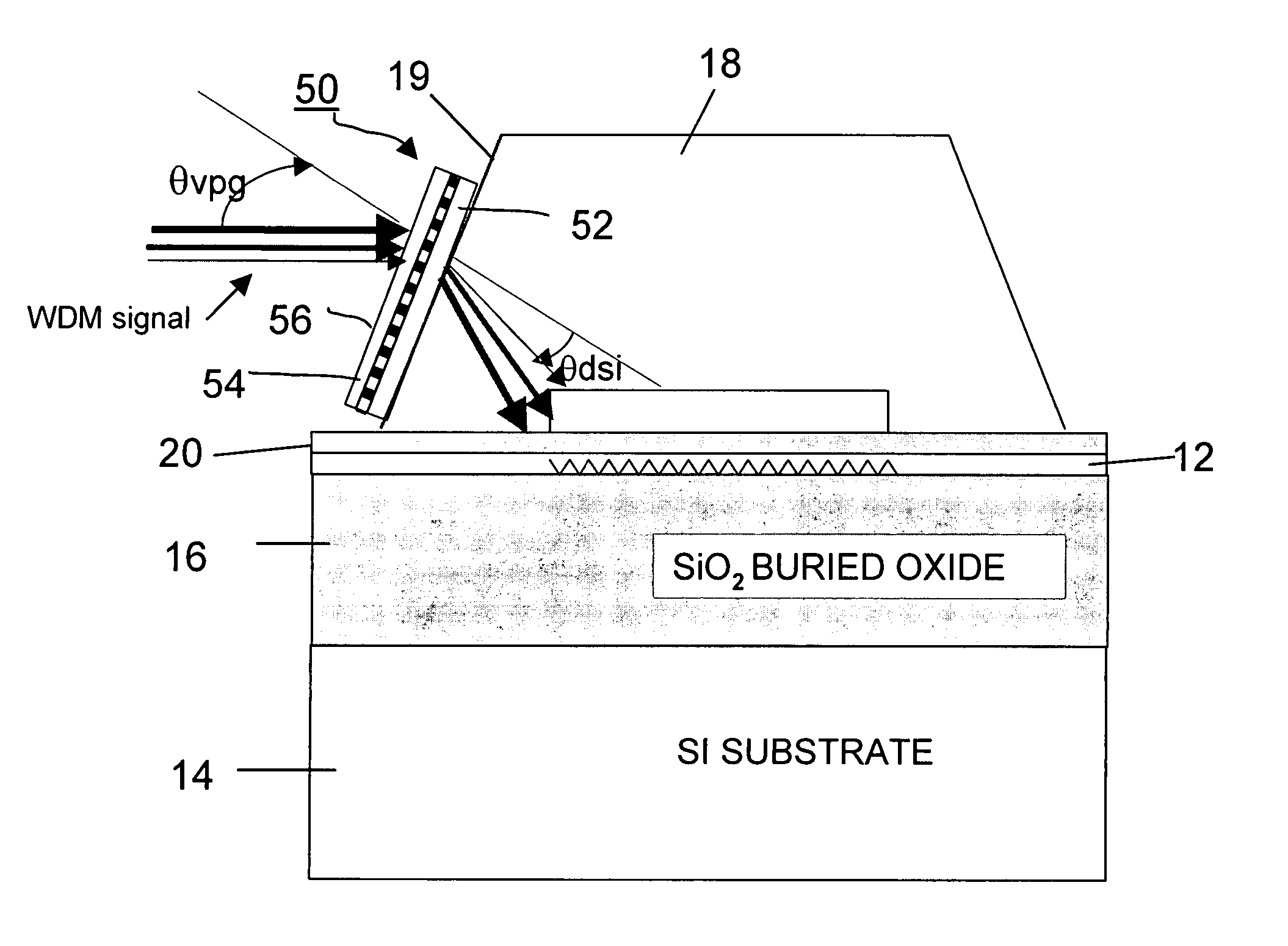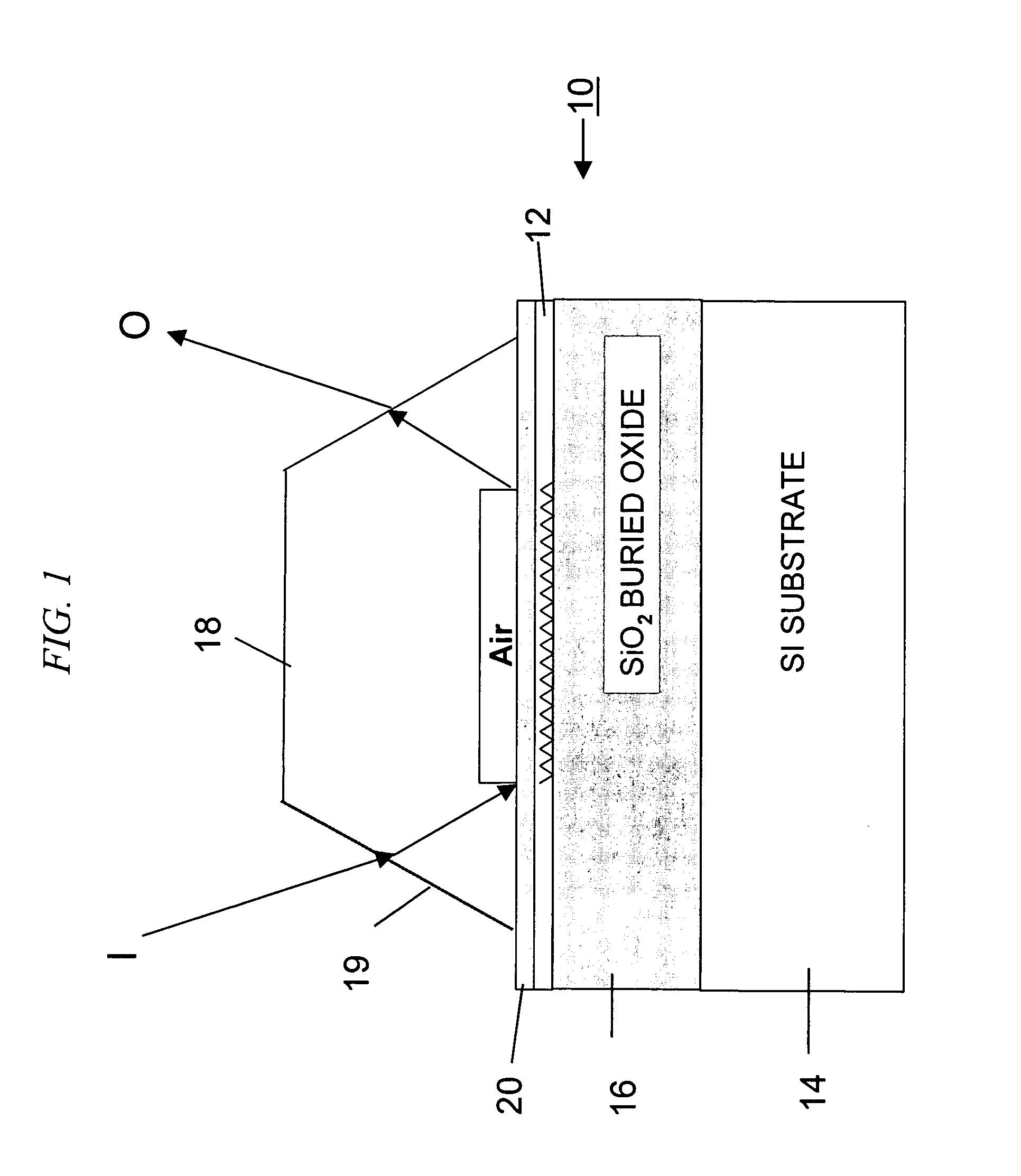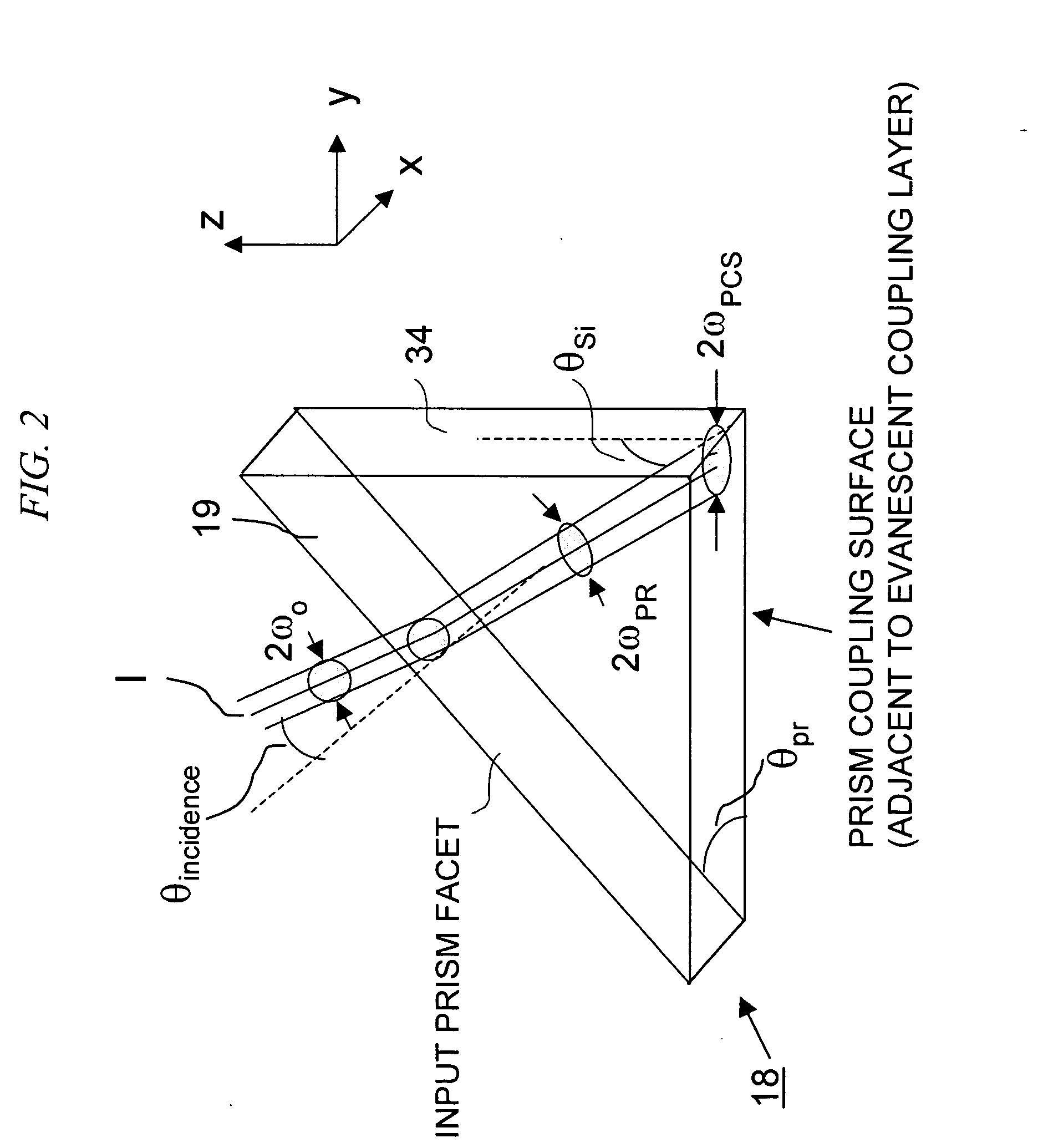External grating structures for interfacing wavelength-division-multiplexed optical sources with thin optical waveguides
a technology of optical waveguides and external grating structures, which is applied in the direction of optics, instruments, optical light guides, etc., can solve the problem of exacerbated coupling problems
- Summary
- Abstract
- Description
- Claims
- Application Information
AI Technical Summary
Benefits of technology
Problems solved by technology
Method used
Image
Examples
Embodiment Construction
[0019] An exemplary arrangement utilizing prism coupling to bring light into and out of a relatively thin silicon waveguide is illustrated in FIG. 1. In this particular example, an SOI wafer 10 includes a relatively thin (sub-micron) silicon waveguide layer 12 that is separated from a silicon substrate 14 by a buried oxide layer 16. A prism coupling device 18 is utilized to couple an external lightwave beam I into silicon waveguide layer 12, as shown. An evanescent coupling layer 20, disposed between silicon waveguide layer 12 and prism coupling device 18 is used to affect the coupling between the components. As discussed in our co-pending applications, the refractive index of evanescent coupling layer 20 is selected to be less than the indexes of the prism and silicon waveguide so that efficient guiding within waveguide layer 12 is achieved and maintained. Both prism coupling device 18 and SOI wafer 10 are fabricated using conventional wafer-level semiconductor processing technique...
PUM
 Login to View More
Login to View More Abstract
Description
Claims
Application Information
 Login to View More
Login to View More - R&D
- Intellectual Property
- Life Sciences
- Materials
- Tech Scout
- Unparalleled Data Quality
- Higher Quality Content
- 60% Fewer Hallucinations
Browse by: Latest US Patents, China's latest patents, Technical Efficacy Thesaurus, Application Domain, Technology Topic, Popular Technical Reports.
© 2025 PatSnap. All rights reserved.Legal|Privacy policy|Modern Slavery Act Transparency Statement|Sitemap|About US| Contact US: help@patsnap.com



